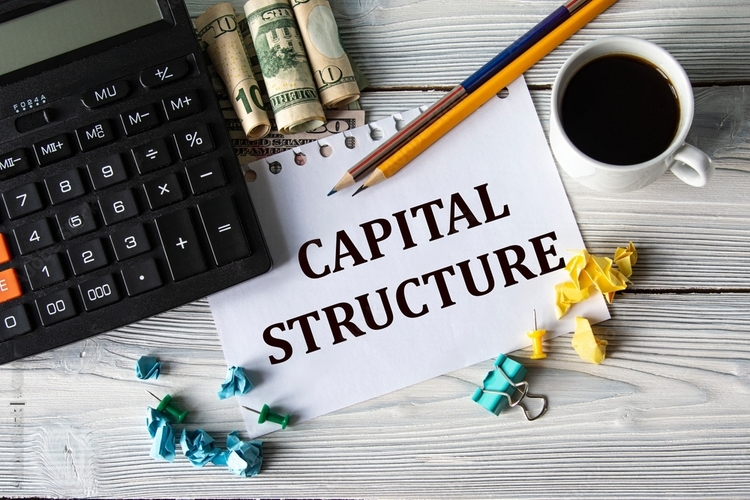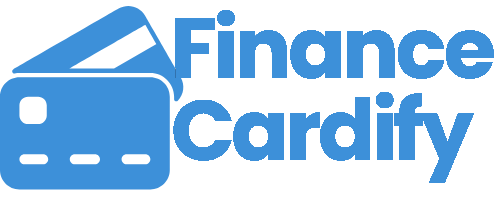Capital structure, essentially the mix of debt and equity a company uses to finance its operations and growth, is a cornerstone of corporate finance. It’s not just an accounting detail; it’s a strategic decision that profoundly influences a company’s risk profile, cost of capital, profitability, and ultimately, its overall financial performance. For executives, investors, and analysts, understanding this interplay is critical for assessing a company’s health and future prospects.
This article delves into the intricate relationship between a company’s capital structure and its financial performance. We’ll explore theoretical frameworks, practical implications, the factors influencing optimal capital structure, and how these choices ripple through a company’s financial statements.
Understanding Capital Structure
A company’s capital structure is typically expressed as the debt-to-equity ratio, or more broadly, the proportion of long-term debt, short-term debt, common equity, and preferred equity used to finance its assets.
- Debt: This includes borrowings from banks, bonds issued to investors, and other forms of credit. Debt comes with fixed interest payments and a maturity date. It’s often cheaper than equity because interest payments are tax-deductible, and lenders face less risk than equity holders (they get paid first in case of liquidation).
- Equity: This represents ownership in the company, typically through common stock. Equity holders expect returns through dividends and capital appreciation. Equity is generally more expensive than debt because it doesn’t offer the tax shield and equity investors demand a higher return for the higher risk they undertake.
The core objective in capital structure decisions is to find the “optimal” mix that minimizes the cost of capital and maximizes firm value.
Theoretical Perspectives on Capital Structure
Several seminal theories attempt to explain the relationship between capital structure and firm value:
1. Net Income (NI) Approach and Net Operating Income (NOI) Approach
These early theories provided contrasting views. The Net Income (NI) approach suggested that by increasing debt (cheaper financing), a company could continuously reduce its weighted average cost of capital (WACC) and increase firm value. This assumed no change in the cost of equity due to financial leverage, which is unrealistic.
The Net Operating Income (NOI) approach, on the other hand, argued that the cost of equity would increase with leverage, perfectly offsetting the benefits of cheaper debt, leading to WACC and firm value remaining constant regardless of capital structure. This view also has limitations in practice.
2. Modigliani-Miller (MM) Theorem
Franco Modigliani and Merton Miller revolutionized capital structure theory. Their initial proposition (MM Proposition I without taxes) stated that in a perfect capital market (no taxes, no bankruptcy costs, symmetric information), a firm’s value is independent of its capital structure. This was a crucial theoretical benchmark.
However, they later introduced MM Proposition II with corporate taxes. This modified view acknowledged that since interest payments on debt are tax-deductible, increasing debt in the capital structure provides a tax shield, which increases the total value of the firm. This theory implies that a company should use as much debt as possible to maximize value.
3. Trade-off Theory
The trade-off theory expands on MM’s tax shield by introducing the concept of financial distress costs. While debt offers a tax advantage, it also increases the risk of bankruptcy or financial distress (e.g., legal fees, loss of customer trust, difficulty securing future financing).
According to this theory, a company will seek an optimal capital structure where the marginal benefit of the debt tax shield equals the marginal cost of financial distress. Beyond this point, the costs of financial distress outweigh the tax benefits, and firm value begins to decline. This theory suggests an optimal debt-to-equity ratio exists, which is less than 100% debt.
4. Pecking Order Theory
Proposed by Myers and Majluf, the pecking order theory suggests that companies prefer to finance new investments using internal funds (retained earnings) first. If internal funds are insufficient, they move to debt financing, which they view as less costly than equity in terms of signaling to the market. Only as a last resort, when both internal funds and debt are unavailable or too expensive, do companies resort to issuing new equity. This preference arises from information asymmetry between managers and outside investors. Issuing new equity can signal to the market that managers believe the company’s stock is overvalued, leading to a negative market reaction.
Practical Implications and Impact on Financial Performance
The theoretical models provide a foundation, but the real-world impact of capital structure is seen directly in a company’s financial performance metrics.
1. Cost of Capital (WACC)
The weighted average cost of capital (WACC) is the average rate of return a company expects to pay to its investors (both debt and equity holders).
- Lower WACC: A lower WACC implies that the company can raise funds more cheaply, making it easier to undertake profitable projects and generate higher returns for shareholders. Debt typically has a lower explicit cost than equity, so introducing more debt (up to a certain point) can lower the WACC.
- Higher WACC: If the company uses too much expensive equity or its debt becomes very risky (leading to higher interest rates), the WACC will increase, making it harder to justify new investments.
2. Profitability and Earnings Per Share (EPS)
Leverage can significantly impact profitability, especially Earnings Per Share (EPS).
- Magnification of Returns: When a company uses debt, it’s essentially using borrowed money to generate returns for equity holders. If the return on assets financed by debt is greater than the interest cost of that debt, the excess return accrues to equity holders, boosting EPS. This is known as financial leverage.
- Magnification of Losses: Conversely, if the company’s returns are lower than the cost of debt, the negative impact is magnified for equity holders, leading to lower EPS or even losses.
- Interest Expense: A higher proportion of debt means higher fixed interest expenses. These expenses reduce net income, but they are tax-deductible, providing a tax shield.
3. Financial Risk
Capital structure directly correlates with financial risk.
- Business Risk vs. Financial Risk: Business risk relates to the uncertainty of future operating income. Financial risk, on the other hand, is the additional risk placed on common stockholders as a result of the decision to use debt.
- Increased Volatility: A highly leveraged company has more fixed financial obligations (interest payments). This makes its earnings more volatile and susceptible to economic downturns or operational disruptions. In times of crisis, high debt can quickly lead to insolvency.
- Credit Ratings: A company’s capital structure is a key factor in its credit rating. A higher debt load generally leads to a lower credit rating, which in turn increases the cost of future borrowing.
4. Liquidity and Solvency
- Liquidity: While debt can provide immediate cash, heavy reliance on short-term debt can strain liquidity if refinancing becomes difficult.
- Solvency: Capital structure directly impacts a company’s solvency – its ability to meet its long-term financial obligations. A balanced structure helps ensure long-term viability.
5. Market Valuation
Investors closely scrutinize a company’s capital structure.
- Investor Perception: A prudent capital structure signals responsible financial management, potentially leading to a higher stock price. Excessive debt can signal distress or recklessness, leading to a lower valuation.
- Market Multiples: Companies with more stable earnings due to a conservative capital structure might command higher price-to-earnings (P/E) or enterprise value (EV) multiples.
Factors Influencing Optimal Capital Structure
Finding the “optimal” capital structure is a dynamic process influenced by various internal and external factors:
- Business Risk: Companies with stable and predictable cash flows (e.g., utilities) can typically carry more debt than those in volatile industries (e.g., technology startups).
- Asset Structure: Companies with tangible, marketable assets that can serve as collateral (e.g., manufacturing firms) often find it easier and cheaper to obtain debt financing.
- Growth Opportunities: High-growth companies often prefer equity financing initially to avoid fixed debt obligations that could stifle expansion, and because they may not have sufficient cash flow to service large debts.
- Profitability: More profitable companies can utilize more debt due to a larger tax shield and better ability to service debt.
- Managerial Conservatism: Management’s attitude towards risk plays a significant role. Some managers prefer lower leverage to maintain financial flexibility and reduce bankruptcy risk.
- Lender and Investor Attitudes: The willingness of banks to lend and investors to buy bonds (and their required returns) depends on economic conditions, interest rates, and the company’s specific risk profile.
- Regulatory Environment: Regulations can impose limits on debt levels, especially in regulated industries like banking and insurance.
- Tax Rates: Higher corporate tax rates increase the value of the debt tax shield, making debt relatively more attractive.
- Market Conditions: During periods of low interest rates, debt becomes more appealing. In volatile markets, investors might prefer equity.
Capital Structure in Practice: Beyond the Theories
While theories provide frameworks, real-world capital structure decisions are complex. Companies rarely operate at a fixed “optimal” point. Instead, they manage a range.
- Flexibility: Many companies prioritize financial flexibility, avoiding excessive debt to ensure they can react to unforeseen opportunities or downturns.
- Credit Ratings: Maintaining a strong credit rating is often a key objective, influencing debt levels to avoid downgrades that increase borrowing costs.
- Industry Norms: Companies often benchmark their capital structure against industry peers, as similar businesses face similar risks and financing needs.
- Shareholder Expectations: Ultimately, the goal is to maximize shareholder wealth. This involves balancing risk and return, where capital structure is a primary lever.
Conclusion
Capital structure is a powerful determinant of a company’s financial performance. It directly impacts the cost of capital, influences profitability through financial leverage, dictates the level of financial risk, and affects liquidity, solvency, and market valuation. While theories like the trade-off theory suggest an optimal mix of debt and equity, achieving this in practice is a dynamic process influenced by a multitude of internal and external factors.
For companies, strategic capital structure management is not a one-time decision but a continuous process of balancing the benefits of debt’s tax shield against the rising costs of financial distress. For investors and analysts, a thorough understanding of a company’s capital structure provides crucial insights into its risk profile, financial health, and potential for sustainable long-term performance. Ultimately, a well-thought-out capital structure is a testament to sound financial management, paving the way for enhanced shareholder value and robust corporate health.





